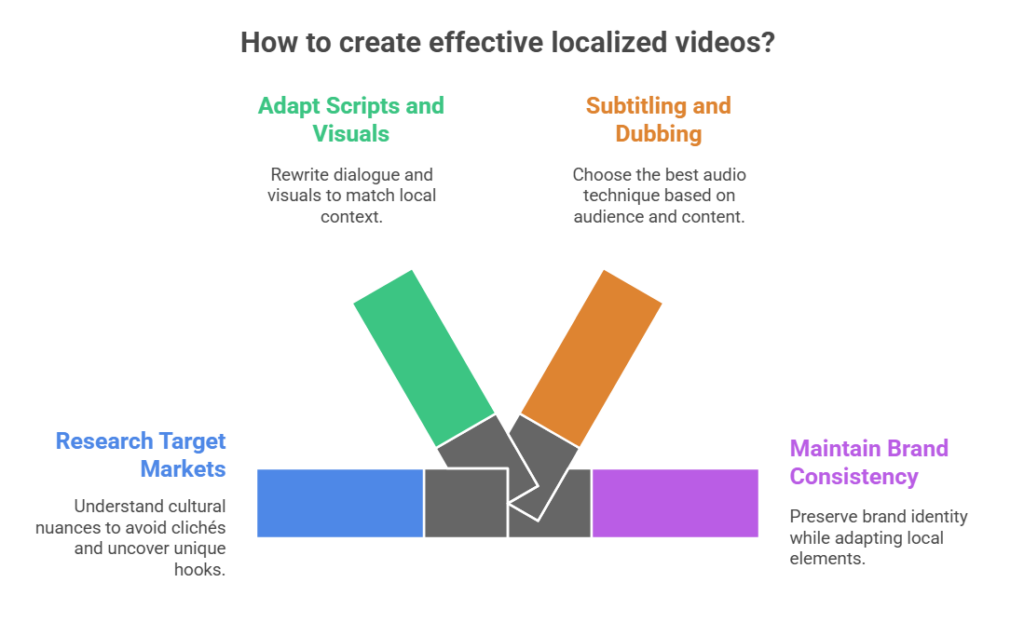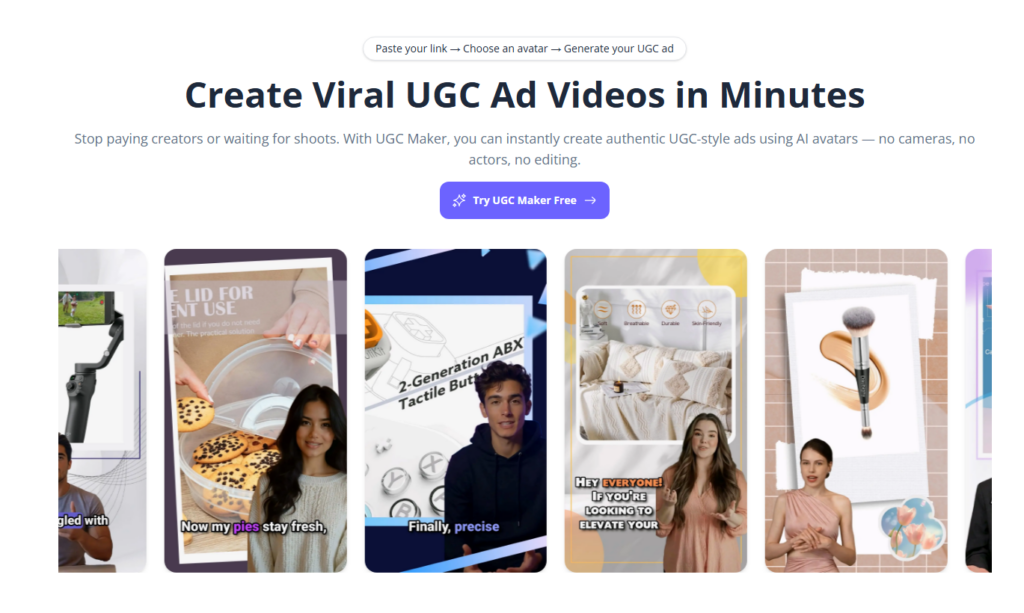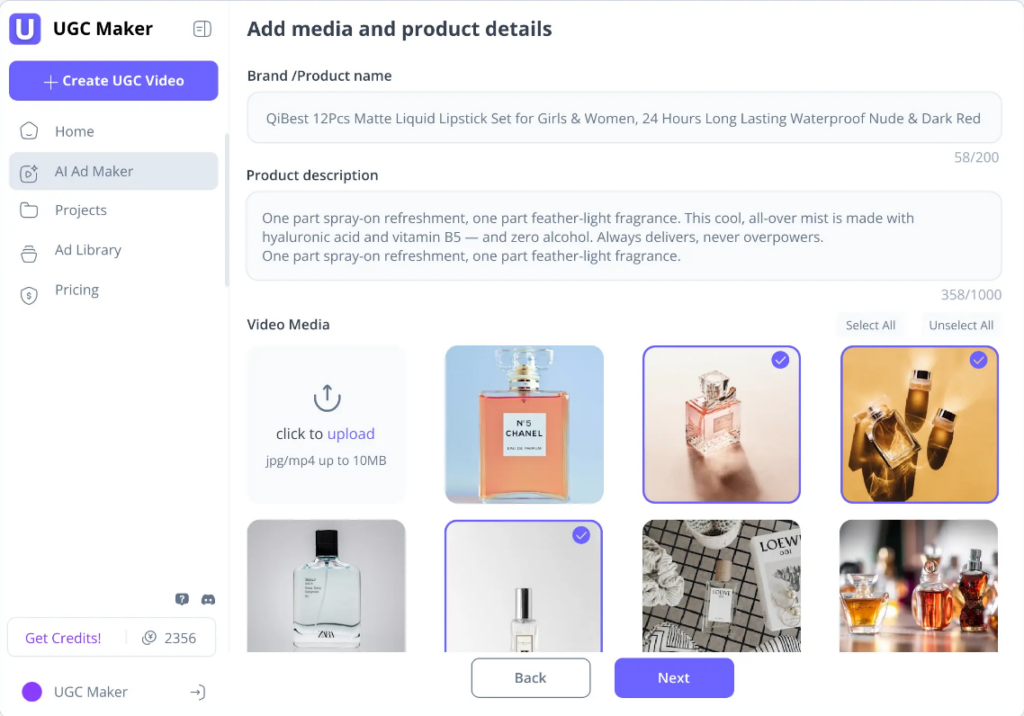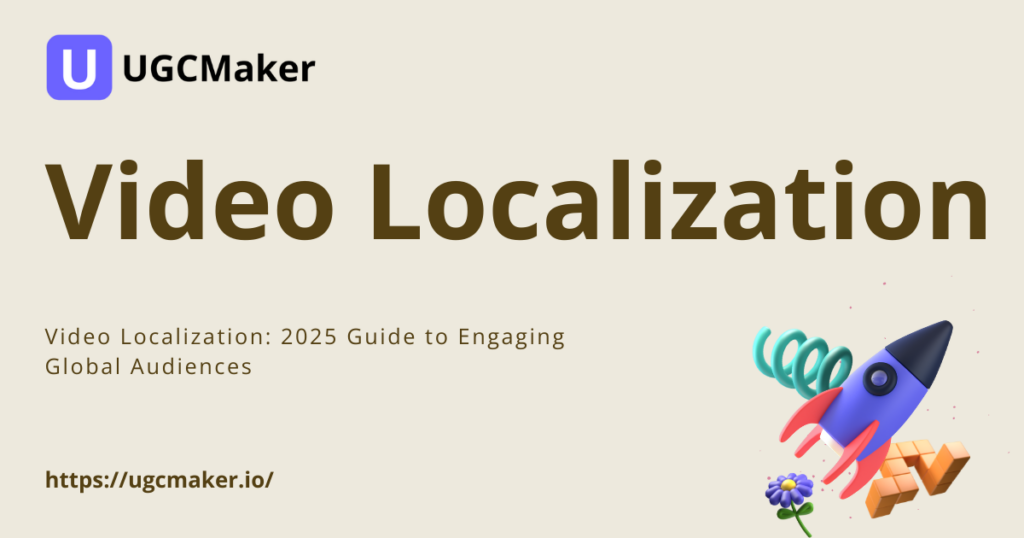What Is Video Localization
At its simplest, Video Localization is the process of adapting a video so it feels native to a particular language, culture, and market — not just readable, but relatable. That means more than translating dialogue: it means adjusting visuals, pacing, music, humor, and even the story’s emotional beats so the content lands as intended in each locale. Think of it as tailoring a suit: the fabric and style can be the same, but the fit must be adjusted for every wearer.
Today’s fastest-growing localization workflows combine automated transcription, AI-assisted translation, lip-syncing or voiceover generation, and human cultural review. This hybrid approach turns a single source video into dozens (or hundreds) of market-appropriate versions quickly and at scale. Several industry guides and platforms recommend this hybrid model as the practical standard for 2025.
Difference Between Translation and Localization
People often use “translation” and “localization” interchangeably — but they’re not the same. Translation converts words from one language to another. Localization transforms the whole experience so it resonates culturally and emotionally. For example:
- Translation might change “Good morning” to its equivalent in Hindi.
- Localization might replace a breakfast scene with local foods, tweak jokes, and reframe references—so viewers in Mumbai feel the clip was made for them.
Localization covers visual symbols, gestures, color connotations, date formats, units of measurement, idioms, and even pacing. Reliable professional resources emphasize that localization is a comprehensive, market-aware process rather than a simple text swap.
Why Video Localization Matters for Global Brands
If marketing is a conversation, localization is the ability to whisper in your customer’s native dialect. There are three high-level reasons brands can’t ignore it:
Connecting Emotionally Across Borders
Global audiences don’t just want information — they want to feel understood. Video Localization helps brands tune their emotional language: a comedic timing that kills in one country might confuse another; a warm family scene might resonate everywhere if cultural cues are right. When a brand nails emotional resonance, engagement metrics improve dramatically and shareability spikes.
Avoiding Cultural Misunderstandings
Small mistakes in imagery or phrasing can snowball into PR crises. A naive color choice, gesture, or idiom can accidentally offend. Localization minimizes those risks by swapping potentially problematic elements for culturally appropriate alternatives and validating choices with local reviewers.
Building Authentic Brand Relationships
Localization signals respect. When consumers see content that reflects their norms and values, trust grows. Over time, localized content performs better at retention and customer lifetime value because the brand feels less like an outsider and more like a local friend.
Market-first practitioners report that brands investing in Video Localization see measurable uplifts in both short-term campaign KPIs and long-term brand health — a reason global teams increasingly budget for localized creative workflows rather than ad-hoc translations.
| Aspect | Description | Impact |
|---|---|---|
| Connecting Emotionally Across Borders | Video Localization helps brands speak the emotional language of each culture, making humor, tone, and stories resonate globally. | Boosts engagement and shareability. |
| Avoiding Cultural Misunderstandings | Adjusts visuals and language to prevent accidental offense or misinterpretation. | Protects brand image and avoids PR risks. |
| Building Authentic Brand Relationships | Shows respect for local values and traditions, helping brands feel familiar and genuine. | Increases trust and customer loyalty. |
Benefits of Video Localization for International Marketing
Let’s drill into the tangible benefits — the pieces CFOs and marketers actually care about.
Higher Audience Engagement
A localized video invites viewers to stay — watch longer, react, comment, and share. Localization aligns humor, soundtrack, and cultural cues with local tastes so watch time increases. In many markets, audiences are significantly more likely to engage with content in their native language, which directly feeds algorithmic distribution and organic reach. Industry write-ups show localized assets frequently outperform untranslated ones across view metrics.
Better Conversion Rates and ROI
When people feel seen, they convert. Localization tends to reduce friction in the buyer journey — clearer messaging, region-appropriate calls-to-action, and culturally aligned creative all help increase click-through and conversion rates. Case studies from AI-driven localization platforms show meaningful uplifts in regional revenue after rolling out fully localized campaigns.
Greater Brand Trust and Loyalty
Localization builds familiarity. Over time, repeated exposure to native-feeling content reinforces brand trust. In competitive categories, that trust translates into repeat purchases and word-of-mouth — arguably the most valuable ROI of all.
How to Create Effective Localized Videos
Creating excellent localized videos is part anthropology, part filmmaking, part engineering. Here’s a practical roadmap.

Researching Target Markets and Cultural Insights
Begin like a reporter. Don’t assume your main-market creative will land elsewhere. Research should include:
- Language registers (formal vs. colloquial)
- Local humor and pop-culture references
- Symbolism and color meanings
- Regulatory or sensitivity constraints
Use local consultants, social listening tools, and quick focus groups. Good research prevents embarrassing clichés and uncovers hooks unique to each market.
Adapting Scripts and Visual Storytelling
Rewrite — don’t translate — dialogue and captions. Preserve the emotional intent but replace culture-specific jokes and references with local equivalents. Visual storytelling must also adapt: swap stock footage, change wardrobe or props, and alter onscreen text to match reading direction and cultural context.
A production tip: keep editable source files (captions, scene maps, shot lists) so local teams or vendors can substitute assets without rebuilding the entire edit.
Subtitling, Dubbing, and Voiceover Techniques
Three common localization audio paths:
- Subtitles — cost-efficient and quick; best where audiences accept on-screen text.
- Dubbing/Voiceover — more immersive; better when a seamless audio experience is expected.
- Hybrid — retain original music/ambient audio while dubbing or subtitling spoken parts.
Technical best practice: use precise timecodes, concise lines (two short lines max), and native proofreading to avoid mistranslation and awkward line breaks. AI can auto-generate subtitles quickly, but native review is crucial.
Choosing Between Subtitles and Voiceovers
Decisions depend on audience habits and content type:
- Educational or tutorial content often benefits from subtitles (viewers want original speaker nuance).
- B2C ads and narrative content often prefer voiceovers or lip-synced dubbing for smoother emotional delivery.
Test A/B experiments in pilot markets to find the optimal approach.
Maintaining Brand Tone and Consistency
Localization should adapt surface elements while preserving the brand’s soul. Maintain consistent brand colors, values, logo usage, and core messaging, and document rules in a modular brand localization guide. This keeps global identity intact while allowing local flavors.
Tools and Platforms for Video Localization
The tool landscape has exploded. In 2025, there are specialized AI platforms that translate, dub, auto-lip-sync, and generate localized captions across dozens of languages — but human review remains central.
AI Video Localization Tools in 2025
Modern platforms can transcribe audio, propose translated captions, synthesize voiceovers in local accents, and even adjust mouth movements for lip-sync. Popular examples and vendors are actively pushing these capabilities, enabling fast scaling across markets. These tools are especially valuable for content-heavy creators and marketers who need many localized variants.
The Role of Human Translators
Despite AI progress, humans are indispensable for nuance, humor, and error-catching. Native linguists and cultural consultants should validate tone, idioms, and on-screen text. The best workflows combine machine speed with human judgment — AI for draft work, humans for final sign-off.
Combining AI and Human Expertise
A recommended pipeline:
- AI auto-transcribes and drafts subtitles/voiceovers.
- Native linguists edit for tone and cultural fit.
- Local creative teams swap visuals and test.
- QA and pilot launch in small cohorts before full rollout.
This hybrid model keeps timelines fast while preserving quality.
Case Study: Using UGC Maker for Localized Ad Videos
Imagine a small e-commerce brand: they upload a product clip to UGC Maker, which auto-generates subtitle sets and multiple voiceover drafts for target markets. The brand then reviews the AI drafts, requests a few tone changes, and swaps a few culturally specific props in a local edit. Within days, the campaign runs in three languages with native-feeling creatives — at a fraction of traditional localization cost. Tools like UGC Maker lower the barrier for localized campaigns, especially for SMBs and creators who can’t afford bespoke studio work. (UGC Maker appears later as a recommended tool for scaling.)

Best Practices and Common Mistakes to Avoid
Localization is not just about language; it’s about empathy. To master video localization, brands must go beyond simple translation and genuinely embrace local perspectives.
Cultural Sensitivity in Visuals and Audio
Colors, gestures, and even background music can carry drastically different meanings across cultures. Red might symbolize luck in China but danger in the U.K. Likewise, background tunes that feel upbeat in one culture might sound chaotic in another.
When localizing your video, always audit visuals and sounds through a cultural lens. Collaborate with regional consultants or test groups to validate that your message lands the way you intend. Culturally attuned content doesn’t just avoid offense — it wins hearts.
Avoiding Direct Translation Pitfalls
The most common mistake in video localization is treating translation as a one-to-one process. Direct translation often strips away humor, emotion, or cultural references that make the content relatable.
For instance, a U.S. campaign slogan like “Kickstart your morning” may sound strange when translated literally in certain languages. Instead, localized storytelling should recreate the sentiment — not replicate the words.
Remember: localization isn’t copying; it’s creative adaptation.
Keeping Consistency Across Global Markets
While localization tailors content for each region, brand identity must remain consistent. The visuals, tone, and values that define your brand should be recognizable everywhere, even when languages differ.
Develop a global brand guideline that specifies logo placement, color schemes, and messaging tone. This ensures every localized video aligns with your identity. Whether a customer watches your ad in Paris or Seoul, they should instantly feel — this is your brand.
Measuring Success in Video Localization
Creating localized videos is only half the story; knowing whether they work is the other half. Effective video localization demands continuous measurement, iteration, and audience listening.
Key Metrics: Engagement, Watch Time, and ROI
Track engagement rates, watch time, and conversions across regions. If your localized video performs significantly better in one market than another, analyze why. Did the voiceover resonate better? Was the humor more aligned with local preferences?
A/B testing different localized versions helps refine your approach over time. ROI metrics reveal whether your localization investment truly drives business growth — and in most cases, the results are remarkable.
How to Gather and Interpret Regional Feedback
Surveys, social media comments, and regional analytics dashboards offer powerful feedback loops. Pay attention to qualitative feedback, not just numbers. Local viewers might express subtle hints about tone or pacing that data alone can’t show.
Use this insight to fine-tune future video localization projects. The most successful brands treat localization as an ongoing conversation with their global audience — not a one-off task.
The Future of Video Localization
The future of video localization is dazzling. With AI, real-time adaptation, and community-driven creativity, we’re entering a golden age of global storytelling.
AI-Powered Real-Time Localization
Imagine uploading a single video and instantly seeing it auto-translated, dubbed, and lip-synced for 30 languages — all in real time. This isn’t science fiction; it’s happening. Advanced AI engines are now enabling real-time video localization during live streams and webinars, breaking the final barrier between creators and audiences.
Personalization and Interactive Experiences
Beyond translation, personalization will redefine how localized content feels. Brands will soon deliver personalized local versions based on viewer preferences, region, or even mood. For instance, a viewer in São Paulo and one in Berlin might see slightly different intros or product angles — all dynamically localized through AI.
Localized UGC and Community-Driven Campaigns
User-generated content (UGC) is also entering the localization era. Communities across the globe are remixing brand content with their own voices, languages, and cultural flavor. Platforms like UGC Maker are enabling brands to co-create localized campaigns with real users, making content feel organic rather than corporate. This participatory approach marks the next evolution of video localization — where the audience becomes your co-storyteller.

Conclusion
In 2025 and beyond, video localization is no longer a luxury — it’s a necessity. It’s the bridge that transforms global brands into local favorites. When done right, it doesn’t just translate words — it translates emotion.Whether through AI tools like UGC Maker, or through human creative touch, localized videos empower brands to connect, convert, and cultivate trust across borders.

